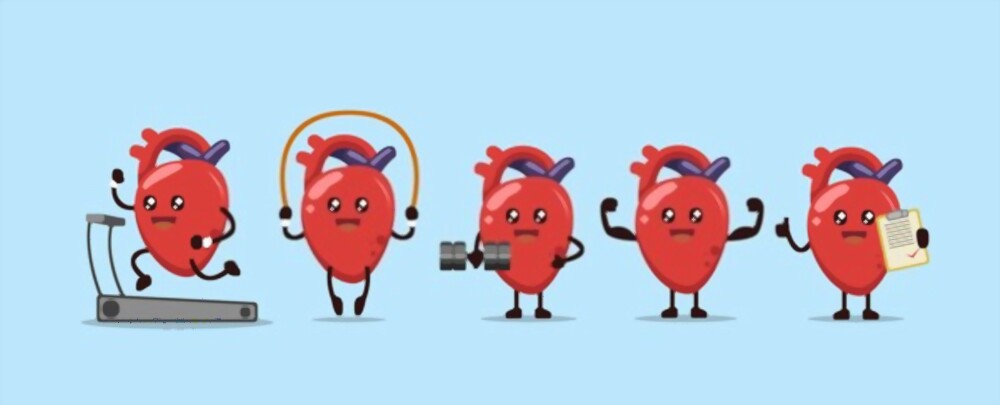Introduction
Hypertension is one of the most common disorders. It is associated with an increased incidence of mortality. Lifestyle modifications are advocated for the prevention, treatment, and control of blood pressure. Exercise is one of the key components for lifestyle modification.
Cardiovascular disease is a leading cause of death. Sudden death is often the first manifestation of cardiovascular disease. Often a lot of people are diagnosed at later stage. Thus treatment and prevention directed at the underlying risk factors, including high blood pressure can prevent morbidity and mortality. Prevention is a fundamental approach in reducing the burden of illness.
Exercise programs that improve endurance lower the blood pressure (BP) in adults. Along with aerobics, resistance training should also be used as an adjunct. With endurance exercises BP decreases approximately 5–7 mm Hg. Moreover, BP is reduced for up to 22 hours after an endurance exercise bout. This is known as postexercise hypotension.
What is high blood pressure?
Hypertension refers to increase in systolic blood pressure above 140 mm Hg and increase in diastolic pressure of above 90 mm Hg. If untreated, this may cause atherosclerosis and congestive heart failure.
Statistical facts about hypertension
- About 1.13 billion people worldwide have high blood pressure.
- Less than 1 out of 5 people have it under control.
Anti- hypertensive effects of exercise
- Decrease in catecholamines
- Reduced total peripheral resistance
- Improved insulin sensitivity
It is important that patients are evaluated, treated, and monitored closely. Beginning with moderate intensity exercise training such as walking is helpful.
Exercise factors to consider
Lets understand the training frequency, intensity, time, and type (FITT) to optimize the BP lowering capacities of exercise. This is known as the FITT principle of exercise.
Frequency
Intensity
Time
Type
Frequency
Every adult should accumulate 30 minutes or more of moderate-intensity physical activity. This should be done preferably all, days of the week. Minimum 3-5 days of week is advisable for obtaining benefits. Training frequencies between 3 and 5 days of a week are thus effective in reducing BP .
Intensity-
The intensity should be of moderate-intensity physical activity. Reductions in BP resulting from endurance exercise training are obtained at exercise conducted at intensities between 40% and 70% of V02. Greater reductions in resting BP occur when training at less than 70% V˙ O2max as compared with higher intensities.
In summary, moderate-intensity exercise training appears effective in lowering BP. A vigorous exercise program may be appropriate in selected hypertensive patients. However this comes with the risk of cardiovascular complications and orthopedic injuries. Hence it is best to consult your physical therapist
Time:
You should exercise with a duration: 30 min or more. This can be continuous or intermittent exercise per day. However, Continuous rather than intermittent exercise is preferred. Intermittent shorter bouts of activity may also be performed. 30–60 min of aerobic exercise per week conducted at 50% V˙ O2max in previously sedentary hypertensive adults is effective in reducing resting BP. These should be implemented with caution. Minimum of 10-min intermittent bouts of activity can be accumulated throughout the day.
Type-
Aerobic along with by resistance exercise are recommended. Some examples of endurance exercises such as walking, jogging, running, or cycling provide the best benefits. However, any activity that uses large muscle groups, continuous rhythmical and aerobic in nature is recommended as the primary modality for those with HTN. Individual preference is related long-term adherence to any exercise program. Resistance training should be used as an adjunct to aerobic training.

Special considerations
For people who are on Antihypertensive medications such as beta blockers and diuretics
These drugs impair the ability to regulate body temperature during exercise if climate is humid and provoke hypoglycemia. Thus it is important for you to stay hydrated, use proper clothing which will encourage cooling. If increased hot/ humid temperatures persist, it is recommended that you exercise with lower frequencies and intensity.
For people who are on antihypertensive agents such as alpha blockers, calcium channel blockers, and vasodilators
After sudden stoppage of exercise, sudden hypotension may occur. Thus it is important for you to perform a well organised 10-15 minutes of cooldown period t avoid this.
If overweight or obese
Recommendations include a daily caloric expenditure of more than 300 kcal, coupled with reductions in energy intake.
Individuals with severe or uncontrolled BP
These individuals should add exercise training only after consultation to doctor.
Individuals with controlled HTN and no CVD or renal complications may participate in an exercise program or competitive athletics, but it is important that you should be evaluated, treated, and monitored closely.
Benefits of exercise to regulate BP- Some facts of evidence
- Increased fitness is associated with reduced incidence of high blood pressure.
- Resting BP is found to be reduced with dynamic aerobic exercises.
- The ambulatory blood pressure reduces with aerobic training.
- Resistance exercises have also shown a minimal effect in reducing blood pressure.
- Regular endurance exercises may also provide similar benefits in older age groups.
FACT
DID YOU KNOW?
Small reductions in blood pressure of about 2 mm Hg reduce the risk of stroke by approximately 14% and risk of coronary artery disease by approximately 9% in the general population.
Also read – https://vcurehealthcare.com/hot-pack-v-s-ice-pack-know-when-to-use-what/

